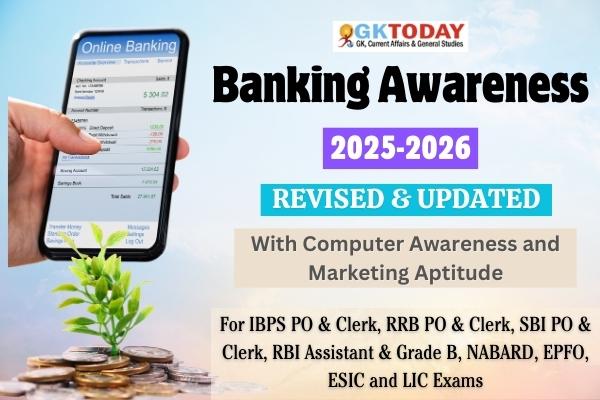Banking & General Financial Awareness
Banking & General Financial Awareness Multiple Choice Questions (MCQs) and Answers with explanation for All Banking Exams of 2024-25 such as IBPS Bank PO, IBPS Bank Clerical, RRB PO and Clerical, SBI PO and SBI Clerical, IBPS Recruitments, RBI Grade B and RBI Banking Examinations.
31. Banks in India that fail to meet Priority Sector Lending targets are required to contribute to which fund?
[A] National Housing Bank (NHB)
[B] Rural Infrastructure Development Fund (RIDF)
[C] Small Industries Development Bank of India (SIDBI)
[D] MUDRA Ltd.
Show Answer
Correct Answer: B [Rural Infrastructure Development Fund (RIDF)]
Notes:
Banks that do not meet Priority Sector Lending targets must contribute to the Rural Infrastructure Development Fund (RIDF), which is managed by NABARD, supporting rural infrastructure projects in India.
32. Which body regulates the Asset Reconstruction Companies (ARCs) under the SARFAESI Act, 2002?
[A] Ministry of Finance
[B] Securities and Exchange Board of India (SEBI)
[C] Reserve Bank of India (RBI)
[D] Insurance Regulatory and Development Authority (IRDA)
Show Answer
Correct Answer: C [Reserve Bank of India (RBI)]
Notes:
The Reserve Bank of India (RBI) is responsible for regulating Asset Reconstruction Companies (ARCs) under the SARFAESI Act, 2002, ensuring effective management of distressed assets held by banks.
33. Which party is responsible for transferring a Letter of Credit in a transferable LC arrangement?
[A] Confirming Bank
[B] Transferring Bank
[C] Issuing Bank
[D] Applicant
Show Answer
Correct Answer: B [Transferring Bank]
Notes:
In a transferable Letter of Credit, the Transferring Bank is responsible for transferring the credit from the first beneficiary to one or more second beneficiaries.
34. What role does the RBI play in promoting ESG practices in Indian banks?
[A] Providing only monetary policy updates
[B] Issuing guidelines on green financing and climate risk management
[C] Reducing financial inclusion efforts
[D] Mandating banks to eliminate corporate social responsibility
Show Answer
Correct Answer: B [Issuing guidelines on green financing and climate risk management]
Notes:
The Reserve Bank of India promotes ESG practices by issuing guidelines on green financing, sustainable development, and climate risk management for Indian banks.
35. In Basel III, the leverage ratio is defined as:
[A] Tier 1 capital to total risk-weighted assets
[B] Tier 1 capital to total assets
[C] Tier 2 capital to total risk-weighted assets
[D] Tier 2 capital to total assets
Show Answer
Correct Answer: B [Tier 1 capital to total assets]
Notes:
The leverage ratio under Basel III is calculated by dividing Tier 1 capital by the bank’s total exposure (on and off-balance sheet assets) without risk weighting.
36. The Basel norms are applicable to:
[A] Central banks only
[B] Commercial banks and financial institutions
[C] Non-banking financial companies
[D] Credit rating agencies
Show Answer
Correct Answer: B [Commercial banks and financial institutions]
Notes:
Explanation: Basel norms apply to commercial banks and financial institutions to ensure they maintain adequate capital and manage risks effectively.
37. Which of the following services is commonly offered by offshore banks?
[A] Local housing loans
[B] Cross-border investment services
[C] Agricultural loans
[D] Microcredit services
Show Answer
Correct Answer: B [Cross-border investment services]
Notes:
Offshore banks typically offer cross-border investment services, wealth management, and tax optimization strategies to international clients.
38. What is the primary purpose of blockchain-based identity management systems in banking?
[A] To store customer data on physical servers
[B] To provide secure and efficient customer verification processes
[C] To eliminate the need for any form of customer verification
[D] To share customer data publicly without consent
Show Answer
Correct Answer: B [To provide secure and efficient customer verification processes]
Notes:
Blockchain-based identity management solutions aim to provide secure and efficient customer verification processes, reducing fraud and enhancing compliance with regulatory requirements.
39. What does “market capitalization” represent in the stock market?
[A] The total trading volume of a company’s shares
[B] The total value of a company’s outstanding shares
[C] The net worth of a company
[D] The difference between the book value and market value of a company
Show Answer
Correct Answer: B [The total value of a company’s outstanding shares]
Notes:
Market capitalization refers to the total value of a company’s outstanding shares in the market. It is calculated by multiplying the current share price by the total number of outstanding shares.
40. Which regulatory body governs commodity futures trading in India?
[A] Reserve Bank of India (RBI)
[B] Securities and Exchange Board of India (SEBI)
[C] Ministry of Finance
[D] Association of Commodity Exchanges in India
Show Answer
Correct Answer: B [Securities and Exchange Board of India (SEBI)]
Notes:
Since 2015, SEBI has been regulating the commodity derivatives market in India, ensuring transparency and investor protection.

